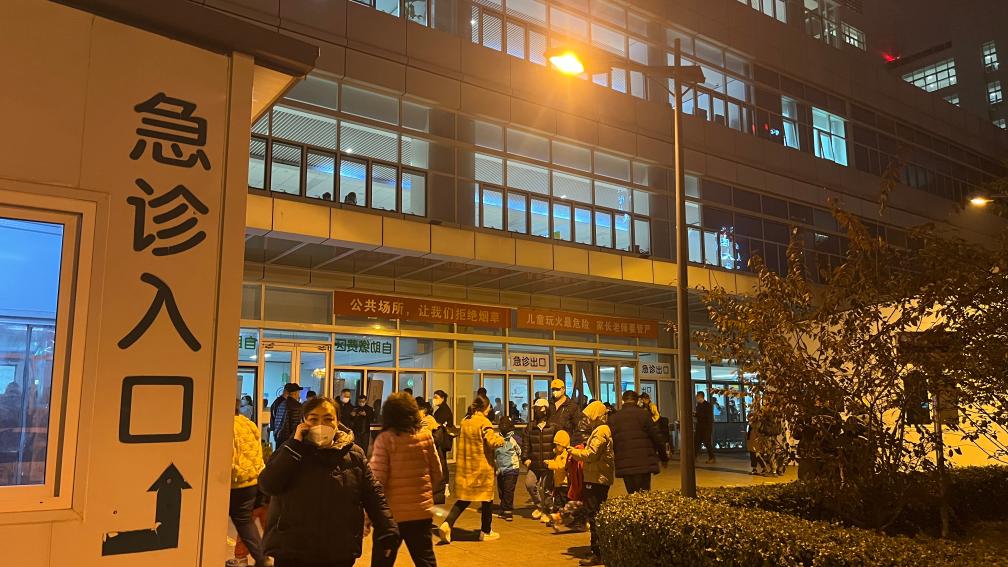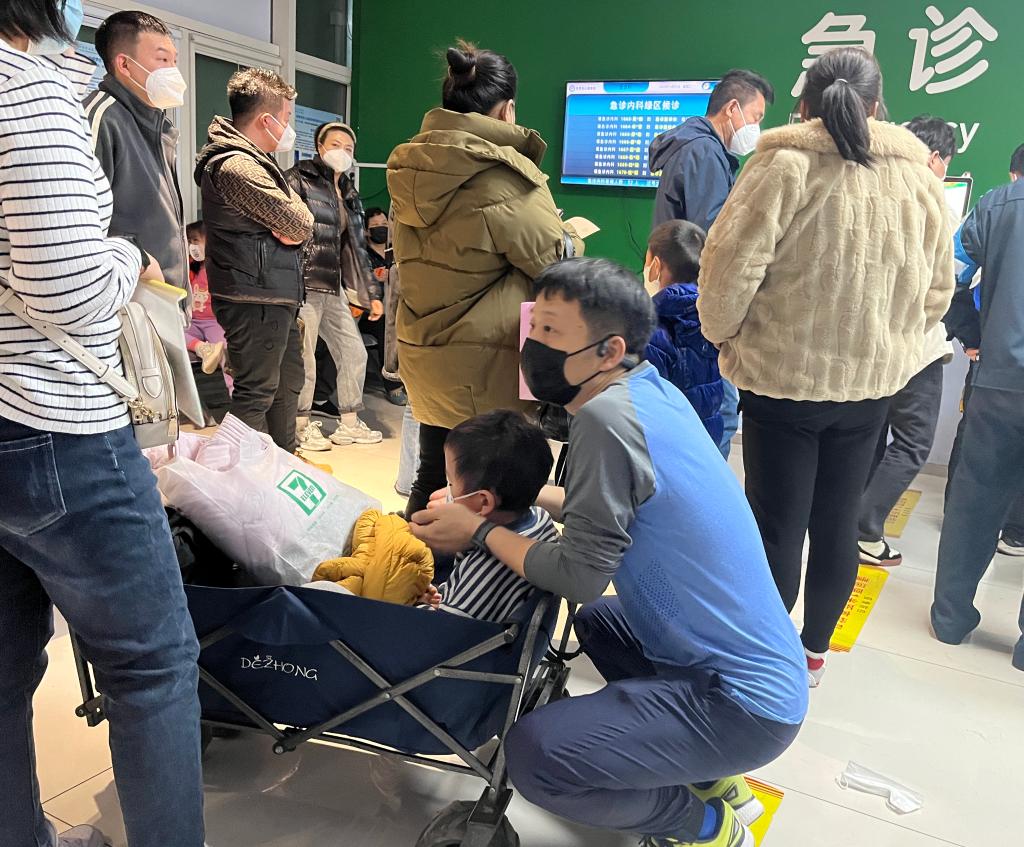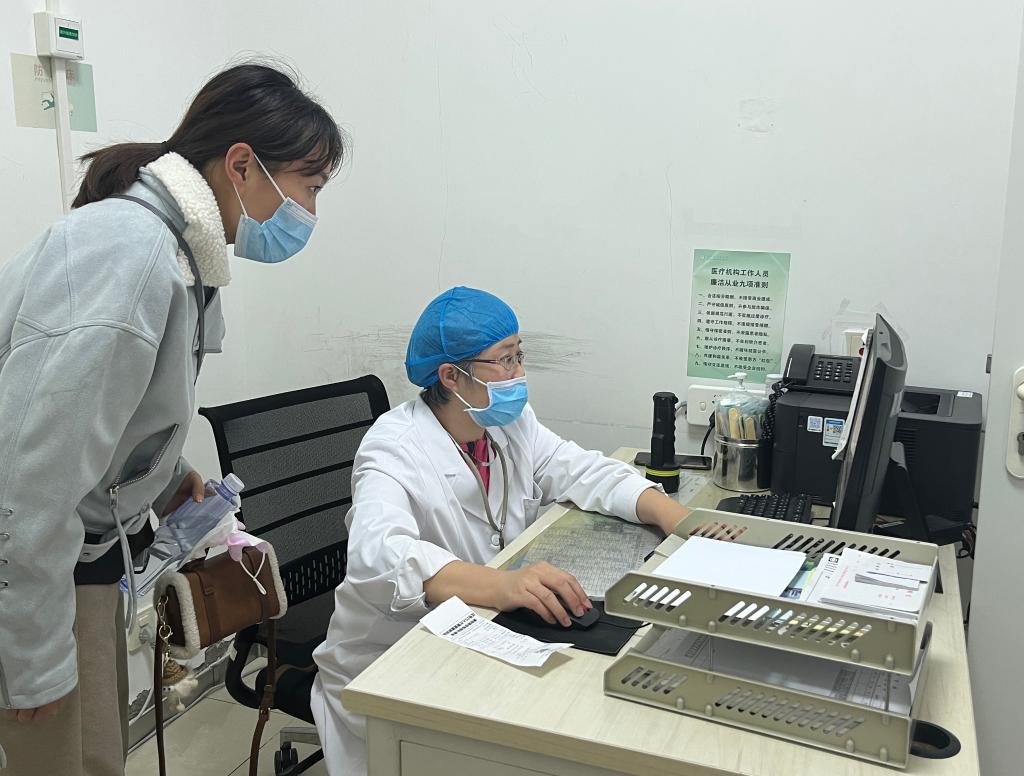Xinhua News Agency, Tianjin, November 25th (Reporter Xu Siyu, Zhang Jianxin, Wang Jinghuai) As night falls, the temperature approaches zero degrees Celsius. Parents wrapped in thick clothes hurried into Tianjin Children’s Hospital with their children in their arms. Recently, children’s mycoplasma pneumoniae infection, influenza and other respiratory diseases are high, which makes many parents worry and hospitals continue to operate at high load. Recently, the reporter walked into Tianjin Children’s Hospital to explore how the children in the emergency area see a doctor at night and how the medical staff stick to it.
The "First Pass" of Emergency Department
At 3 o’clock in the morning, the emergency area of Longyan Campus of Tianjin Children’s Hospital was brightly lit. A parent panted and ran to the clinic, and his one-year-old child was suffering from a high fever.
Luo Chang, the nurse on duty, quickly took the child, quickly looked at his face, pressed his eyes, measured his blood oxygen and called the child softly, but there was no response. "At that time, the child’s pulse was very weak and the oxygen saturation was less than 90%." Luo Chang initially judged that his condition was critical and immediately rushed to the rescue room 200 meters away with his child in his arms. After more than 50 minutes of rescue, the child was finally out of danger.
"Diagnosis is the first level of emergency treatment. It is convenient for scientific and timely treatment to initially identify the condition and severity of the child." Liujing, head nurse of the emergency department of Longyan Hospital of Tianjin Children’s Hospital, said that the hospital could guide the children to go to green, yellow and red clinics through diagnosis and treatment. "It is more important to find critically ill patients at the first time and grab the first aid time."

At night, at the entrance of the emergency area of the racecourse yard of Tianjin Children’s Hospital. Xinhua News Agency reporter Xu Sizhen photo
At night, in front of the emergency clinic, the new children came one after another. The nurse on duty looked at each child’s face and hands one by one, asked the parents about the symptoms and registered information. After registration, parents go directly to the registration window to get the number, and then go to the corresponding treatment area to wait for the number-calling treatment.
Outside the consultation area, hospital staff and security personnel are also working overtime to maintain order and help call the number. As the number plate is turned again, several parents take their children into the consultation room.
Waiting in the camping cart
At ten o’clock in the evening, the wind roared. Tianjin Children’s Hospital is full of heating. People come and go in the emergency area, and coughs come from time to time. There are babies in their arms and teenagers waiting in line in front of the clinic.
In the team, several camping trolleys are particularly conspicuous. Different from a stroller, this stroller is like a small bed, in which five or six-year-old children can lie. Parents push carts in line, and children lie in the car to rest.

Children lying in trolleys and parents waiting in line in the emergency area on the first floor of the racecourse yard of Tianjin Children’s Hospital. Xinhua News Agency reporter Xu Sizhen photo
In the waiting area, a little girl with a fever patch was asleep in the cart, while the old lady quietly waited for the test paper.
"The child’s fever was not obvious some time ago, and the cough time was long. Recently, the high fever reached 39 degrees Celsius and continued." The old lady looked at her granddaughter with a distressed face and said, "With this stroller, the child is more comfortable."
Despite the impatience, the team is basically orderly. It is the second time for a young couple who are also pushing a cart to come to the hospital. The husband looks at the call screen from time to time. "The children get sick together, the team is long, they are psychologically prepared, and everyone understands each other."
Recently, the Tianjin Municipal Health and Health Commission held a press conference on the theme of "Prevention and treatment of respiratory diseases in winter and spring", and good news came. At present, the medical resources such as outpatient and emergency services, hospitalization and medicines in the city are relatively sufficient. As of the day of the press conference, the number of pediatric outpatient and emergency departments in the city has decreased for three consecutive days, and the demand for pediatric treatment has slowed down.
Medical staff, administrative staff, and property staff all went into battle.
Gu Yanmin, director of the emergency department of Longyan Hospital, has seen more than 30 patients continuously, and has not drunk water or eaten for four or five hours. Taking advantage of the gap between patients entering the door, Gu Yanmin went to the dressing room to wash her hands neatly, took out the condolence food prepared by the hospital, ate two bites, and then returned to the consultation room.
"This is food prepared by the hospital for emergency medical staff." Gu Yanmin pointed to two bites of bread and told reporters that the hospital trade union specially distributed condolence materials and put them in the locker room. If you are hungry, you can pad your stomach.
The number of pediatricians per thousand children in Tianjin is about 1.14, which is higher than the requirement of National Health Commission to reach 0.87 by 2025. Coupled with the supplement of traditional Chinese medicine pediatrics and general practitioners, the overall pediatric resources in Tianjin are relatively abundant. However, in the face of a large number of children patients, the workload of medical staff is still very large.

In Tianjin Children’s Hospital Racecourse Campus, Shang Yueyun is asking for a consultation. Xinhua News Agency reporter Xu Sizhen photo
Aiqi, deputy chief physician of hematology department, goes out to the outpatient department of pediatrics at night every week. "We are ready to deal with ‘ A protracted war ’ Preparation. "
"When catching up with a lot of patients, the doctor who completed the emergency rotation also stayed to continue to help." Shang Yueyun, deputy administrative director and chief physician of the Department of Critical Care Medicine in Machang Campus, said, "When the number of patients increases, the hospital will deploy doctors to support the emergency department within 5 to 10 minutes."
In order to get more children to see a doctor in time, many administrative personnel are transferred to the emergency department to be on duty, with the armband of "duty" to guide patients and maintain order. "There are more than 4,000 employees and property personnel in the hospital, and they go all out to protect the baby under the peak of diagnosis and treatment." Liu Wei, dean of Tianjin Children’s Hospital, said.
When the reporter was ready to leave the hospital, parents and children in the emergency area were still coming in and out. As another call sounded, a mother and daughter waiting in line hurried to the doctor … …